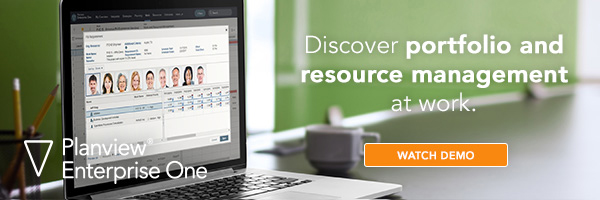
Welcome to the finale of our four-part series that reviews the types of planning organizations have at their fingertips to convert strategy into results. At the beginning of this series, we discussed the importance of developing plans that are dynamic and continuous in order to adapt to change. Now, we will summarize the different types of continuous planning we covered that can enable you and your team to adjust and react to new information and take advantage of emerging opportunities.
Before getting started, catch up on anything you may have missed in the previous installments of this series:
- Part 1: Types of Planning Crucial to Delivering on Strategy
- Part 2: Strategic Planning: The Types of Planning That Bring Your Strategy to Life
- Part 3: Roadmapping: An Essential Planning Practice to Deliver Outcomes
It is within our nature to turn to technology or a fixed plan when facing an immediate problem or long-term aspirational goal. But over the years, we’ve learned that plans need more than technology to be successful. They must consider people, strategies, work, outcomes, and technology. And they must be built with the realization that all of these elements will change.
The planning types include:
- Project financial planning and budgeting to manage the financial information associated with a project.
- Strategic planning to define and manage your strategic missions and initiatives.
- Program planning to turn your strategic objectives into measurable business outcomes.
- Investment and capacity planning to time and measure strategic funding and performance of your strategy.
- Outcome planning and roadmapping to define the products, services, technologies, and applications needed to deliver on your strategic plan.
- Release planning to organize and control how and when your products or services are built, maintained and launched.
- Technology portfolio planning to account for the technology and applications that are integral to your projects and programs.
Now that you have a good idea of all the necessary ingredients that go into developing your plan, let’s talk about how to get started with planning your project.
The first thing to recognize when taking a continuous planning approach is the importance of optimizing and integrating all of the planning types above while at the same time getting buy-in from employees and key stakeholders.
Obviously, each of these planning types offer value in and of themselves. But to truly make a difference, they have to work together and be delivered as part of an integrated process. Software plays a key role here, although most organizations lack this resource. With the right partner and software, you can lead the charge to create a stronger connection between strategy, day-to-day execution, and delivery. The eBook, Planning Deconstructed: Five Types of Planning Crucial to Delivering on Strategy with a Dynamic and Continuous Approach, offers a maturity model that can help you identify where you are in the process and take steps toward a more strategic approach to planning.
The model helps you and your organization determine a strategy to define your goals and streamline your continuous planning process to create budgets faster and align projects. The approach helps you deliver your plan iteratively to budget, forecast, and react in real-time to changes.
Don’t allow yourself to become frustrated by others.
As you go down this path—particularly the stakeholders—if they don’t quickly jump onboard. Many will still take a traditional, budget-based approach to annual planning. But you can still make progress towards convincing them and moving forward if you understand the strategy and ask the right questions before going into execution mode. Then, you can determine prioritization, funding, and staffing across portfolios.
Focus on the overall portfolio of projects and resources instead of planning and managing products, applications, or services separately.
And know that you don’t have to implement planning capabilities all at once.
Stay flexible.
Remember that rigid annual planning processes can stifle the ability to bring in new demand throughout the year. Relaunching demand management will improve your ability to analyze new demand against your strategic goals and in-flight work. Your organization can stop saying ‘yes’ blindly to everything and only bring in projects that you have capacity to manage and that will actually realize value for the business.
As you develop and rollout your continuous planning approach, you’ll need the help of software and professionals to help navigate through the complexity of your digital transformation initiatives and development of new products and services to help ensure everything rolls up into your integrated strategic portfolio.
Watch a demo to discover how to better manage the different types of planning and how portfolio and resource management can help organizations and professionals make the most of consolidated, continuous, and dynamic plans.
For a complete look at the entire series, check out our whitepaper: Planning Deconstructed: Five Types of Planning Crucial to Delivering on Strategy with a Dynamic and Continuous Approach. Good luck with your new approach to planning for success.





